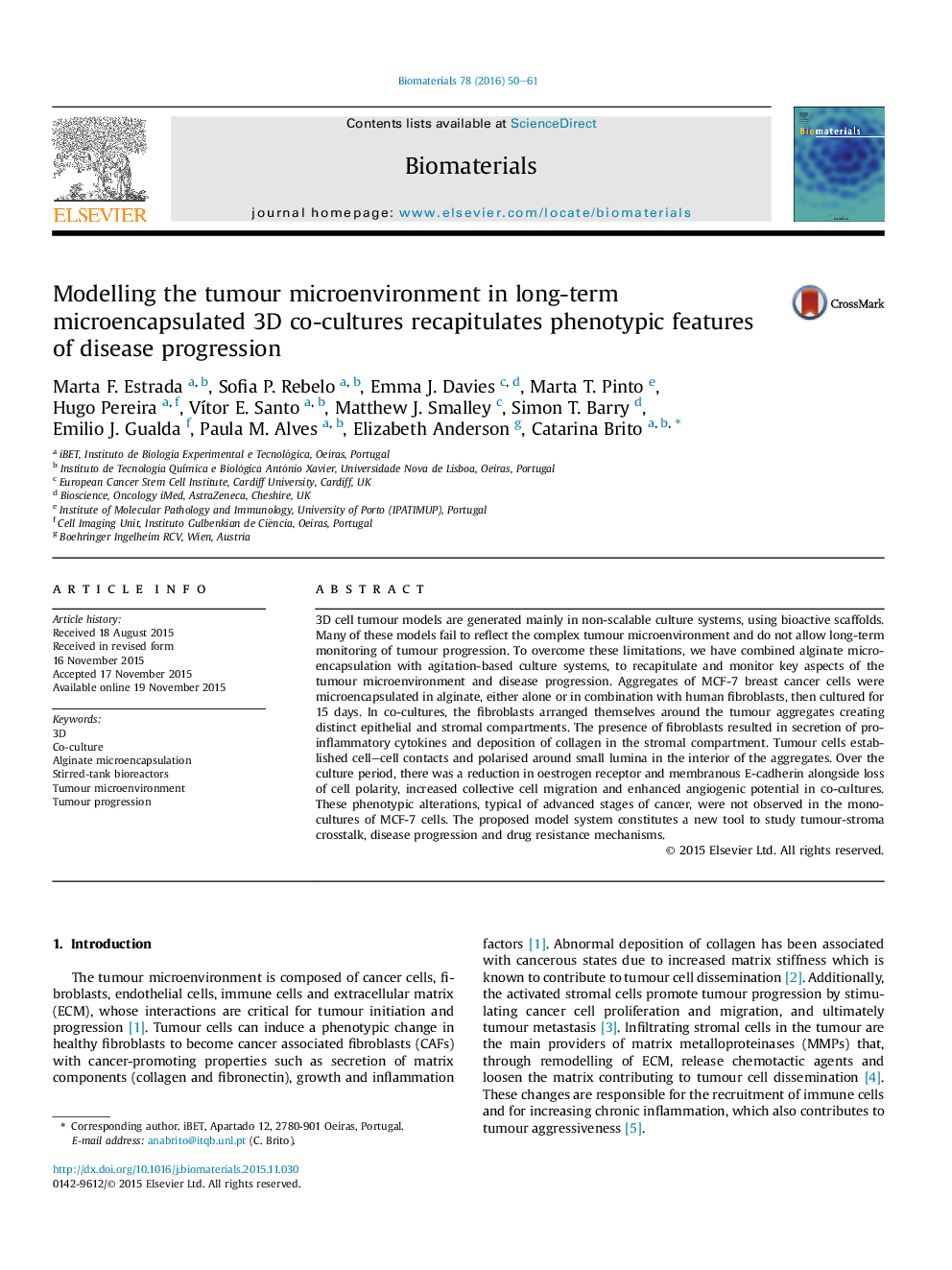| Article ID | Journal | Published Year | Pages | File Type |
|---|---|---|---|---|
| 6485216 | Biomaterials | 2016 | 12 Pages |
Abstract
3D cell tumour models are generated mainly in non-scalable culture systems, using bioactive scaffolds. Many of these models fail to reflect the complex tumour microenvironment and do not allow long-term monitoring of tumour progression. To overcome these limitations, we have combined alginate microencapsulation with agitation-based culture systems, to recapitulate and monitor key aspects of the tumour microenvironment and disease progression. Aggregates of MCF-7 breast cancer cells were microencapsulated in alginate, either alone or in combination with human fibroblasts, then cultured for 15 days. In co-cultures, the fibroblasts arranged themselves around the tumour aggregates creating distinct epithelial and stromal compartments. The presence of fibroblasts resulted in secretion of pro-inflammatory cytokines and deposition of collagen in the stromal compartment. Tumour cells established cell-cell contacts and polarised around small lumina in the interior of the aggregates. Over the culture period, there was a reduction in oestrogen receptor and membranous E-cadherin alongside loss of cell polarity, increased collective cell migration and enhanced angiogenic potential in co-cultures. These phenotypic alterations, typical of advanced stages of cancer, were not observed in the mono-cultures of MCF-7Â cells. The proposed model system constitutes a new tool to study tumour-stroma crosstalk, disease progression and drug resistance mechanisms.
Related Topics
Physical Sciences and Engineering
Chemical Engineering
Bioengineering
Authors
Marta F. Estrada, Sofia P. Rebelo, Emma J. Davies, Marta T. Pinto, Hugo Pereira, VÃtor E. Santo, Matthew J. Smalley, Simon T. Barry, Emilio J. Gualda, Paula M. Alves, Elizabeth Anderson, Catarina Brito,
